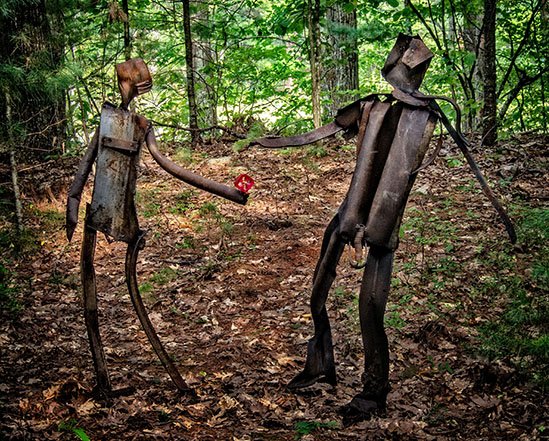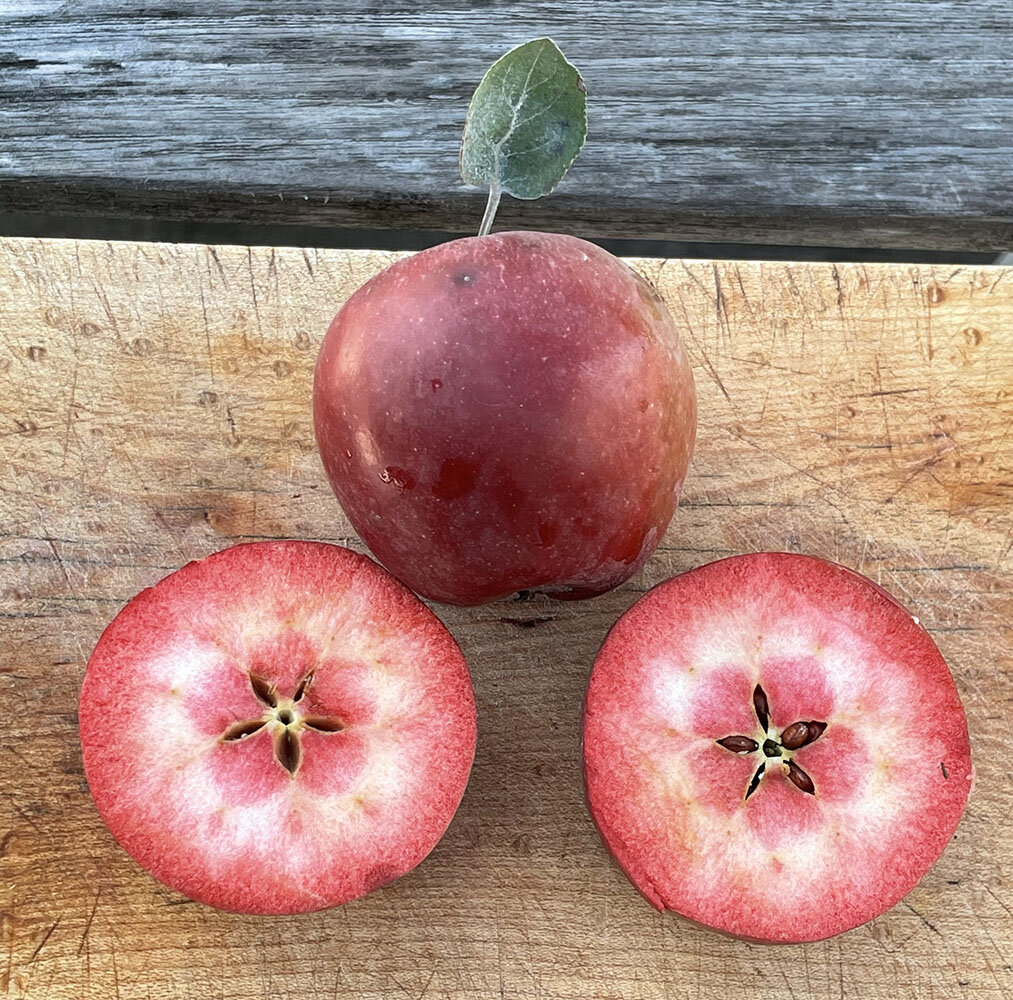A few weeks ago, a friend gave me a New Yorker article: “Love the Fig” by Ben Crair from August 10, 2016. In the autumn issue of my favorite literary journal, Orion, the last essay was on the subject of figs. Why are all these figs coming into my life? Is it because I’m feeling naked as my memoir, The Artist and the Orchard, begins national distribution? Like Adam and Eve, I need to cover myself with fig leaves.
Adam and Eve, 2015 Sculpture by Madeleine Lord
We grow two fig trees at the farm. Right now they are outside my studio in clay pots, shedding their leaves and becoming naked themselves. Once we get consistent freezing temperatures, they will go into an unheated garage space. They’re not cold hardy; they can’t stay out all winter like all the other fruit trees.
Meanwhile, I have been reading about figs. As the fruit grower at the farm, I care for the figs. But I have learned that a fig is not a fruit, it is a flower. A flower that doesn’t strut its stuff like most flowers but hides its blossoms inside its fruit. The fig is an inside-out flower. And because of its uniqueness, it requires a unique insect for pollination.
The fig lives symbiotically with one insect, the only one that pollinates its unusual flower: a fig wasp. There are over 750 varieties of fig trees, and most of these have a unique fig wasp to pollinate their flowers.
The female wasp enters the fig through a tiny opening at the base of the unripe fruit. On her way in through this narrow opening her wings are clipped off. She will never fly again. Once inside the fig, she lays her eggs, and then dies all within a couple of days. When the eggs hatch, the males hasten over to the newly hatched females and fertilize them. Then the males tunnel out of the fruit and die shortly after. The young females follow these tunnels and fly out into the world to look for their own fig tree where they can lay their eggs. Of course, and importantly for the fig tree, they carry pollen from their birth flowers to the new flowers. And from these pollinated flowers grow the seeds of new fig trees.
Biologists say that the fig and fig wasp have been courting each other for more than 60 million years. And for almost as long, a broad range of animals have depended on figs as a food source. Figs in temperate climates fruit all year round, ensuring a steady food supply. They are loaded with minerals and vitamins, and have received the designation ‘superfood’ from humans. Of course, the animals knew this without our branding.
Foresters consider figs to be an important tree for deforested areas. With their quick growth, and attraction to many different species of animals: trees shrews, monkeys, bats, birds, hornbills, squirrels, to name a few, the pollinated seeds deposited from these foraging animals help to quickly create a diversified forest.
We had a small crop of figs this year. I wondered if there had been a fig wasp in the area. But then I checked, and the Chicago fig is one of a few varieties of figs that are self-pollinating. A few apples are also self-pollinating, but they produce a better crop with cross-pollination. We all do better with cross-pollination.
Two Figures on Cherry Wood, Sculpture LH Private Collection
Join me for the book launch for The Artist and the Orchard: A Memoir next Saturday, October 30 at 2 pm at Sanctuary in Maynard, Massachusetts. Proof of vaccination is required. For more information: https://www.sanctuarymaynard.com/.
If you can’t attend the launch, the book is available at your favorite bookstore, online, and at Loom Press. I am also happy to send you a signed copy.
Happy Fall!





















